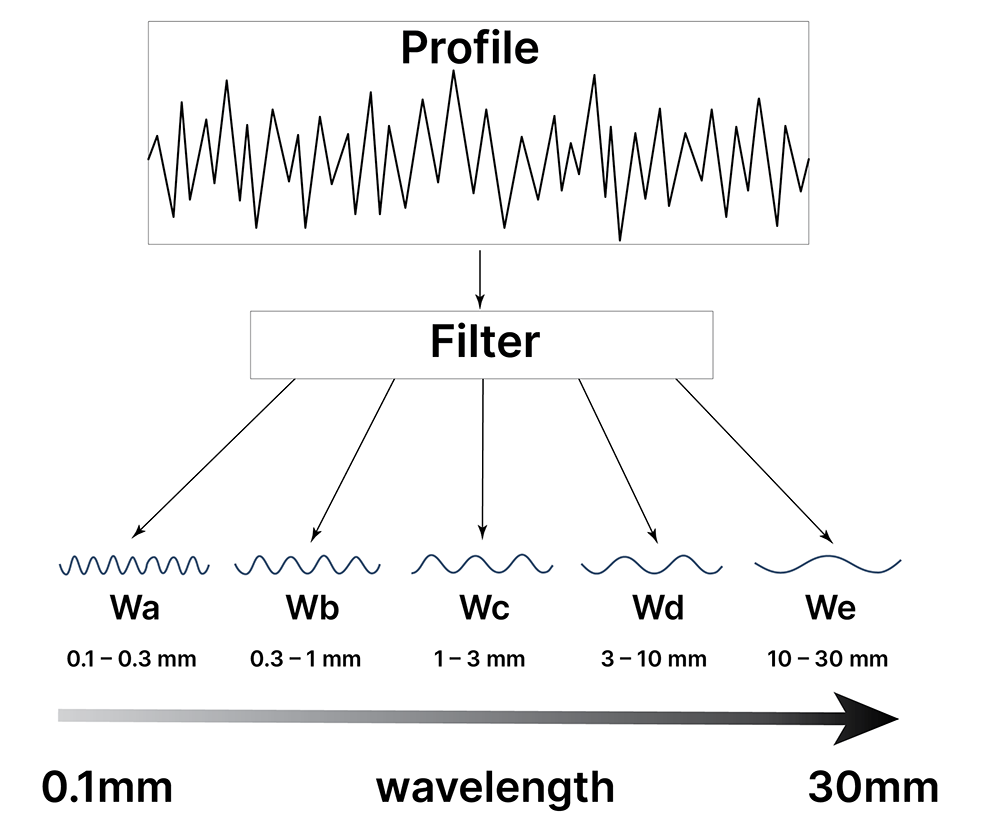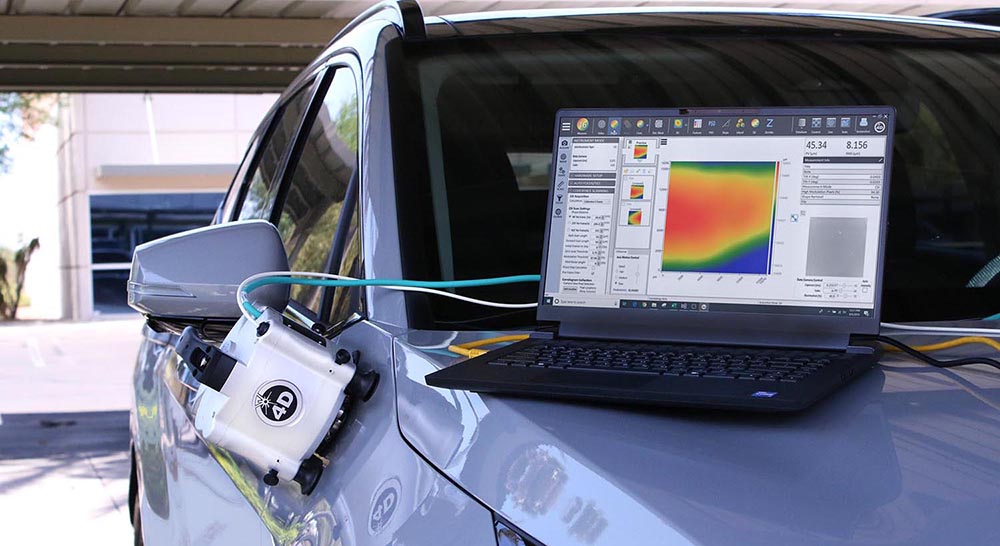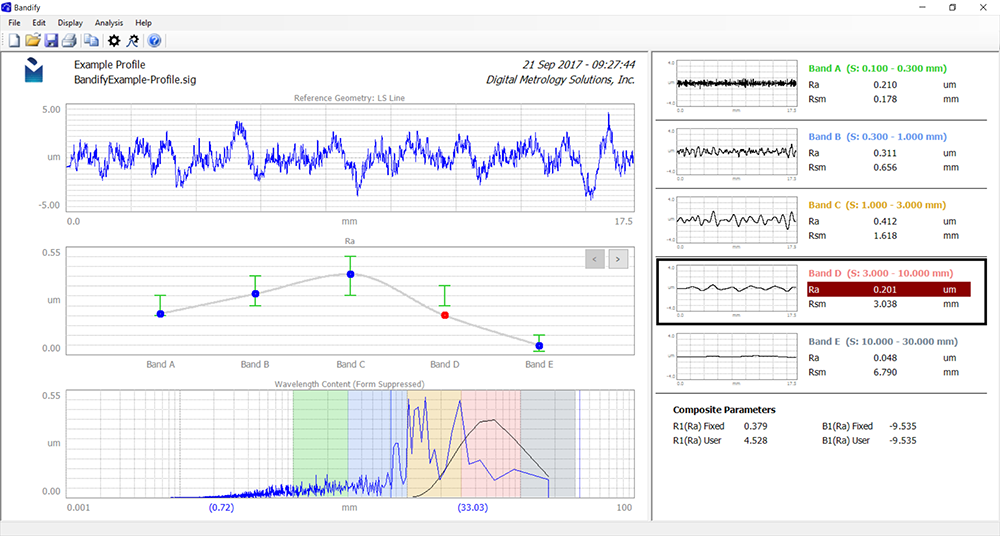Some paint finishes are purposefully glossy or shiny. Others appear matte, or dull, or hazy. So, what leads to the difference…and what do all these terms really mean?
Texture scatters light
A perfectly smooth surface reflects light completely. If the light source is a collimated laser at 45 degrees incidence, it will reflect off the surface at 45 degrees as well.
But surface texture scatters light. Texture can be thought of as consisting of many sine waves of varying spatial wavelengths. Each wavelength will scatter light at different angles, and the higher the amplitudes of those sine waves, the more the light will scatter.
Individual wavelength bands matter
To characterize a paint finish we need to consider the spatial wavelength bands that are important. In the automotive industry, manufacturers have standardized on five bands that matter most for appearance. These bands can be measured using a variety of instruments.

Manufacturers maintain a “recipe” for the acceptable amplitudes in each of these wavelength bands that will combine to produce their intended finish. Unacceptable characteristics such as orange peel and haze can be attributed to specific spatial wavelength bands and can therefore be controlled.

Finish matters in other applications as well. In semiconductor manufacturing, for example, hazing can be generated during polishing operations. The spatial wavelengths that matter in this application are much shorter than for paint finishes.
Shiny vs dull
In order to talk about glossy and matte, we need to start with shiny and dull. A “shiny” surface will reflect most of the incident light, as we described above for the perfectly smooth surface.
A “dull” surface, or “low gloss” surface, will scatter light in all directions. If the surface is dominated by short spatial wavelengths, the dullness may appear as haze. Longer wavelengths may lead to a wavier finish.
Glossy vs matte
Now, things get a little trickier. A “glossy” surface will reflect most incident light in at least one direction. “Shiny” and “glossy” are quite often interchangeable.
“Matte,” however, is not necessarily equivalent to dull. While both matte and dull surfaces are low gloss, a matte surface may actually have a non-random texture. In fact, most manufactured matte finishes have something of a pattern on a certain scale. The pattern may multiply and change direction, like the tooling marks on a brushed surface.
When it comes to appearance, an amplitude parameter such as the overall Ra (average roughness) may be of limited use as very different surface structures will return the same Ra value. Other parameters, such as Sdq (surface slope) or Rsm, or bandwidth-derived parameters such as we described above, provide a much more useful description. These types of parameters can be specified, measured, tracked, and controlled to produce consistent, high quality finishes.

Learn more about appearance in the Painting and Coating module of our Surface Roughness, Texture and Tribology course on udemy.com.
